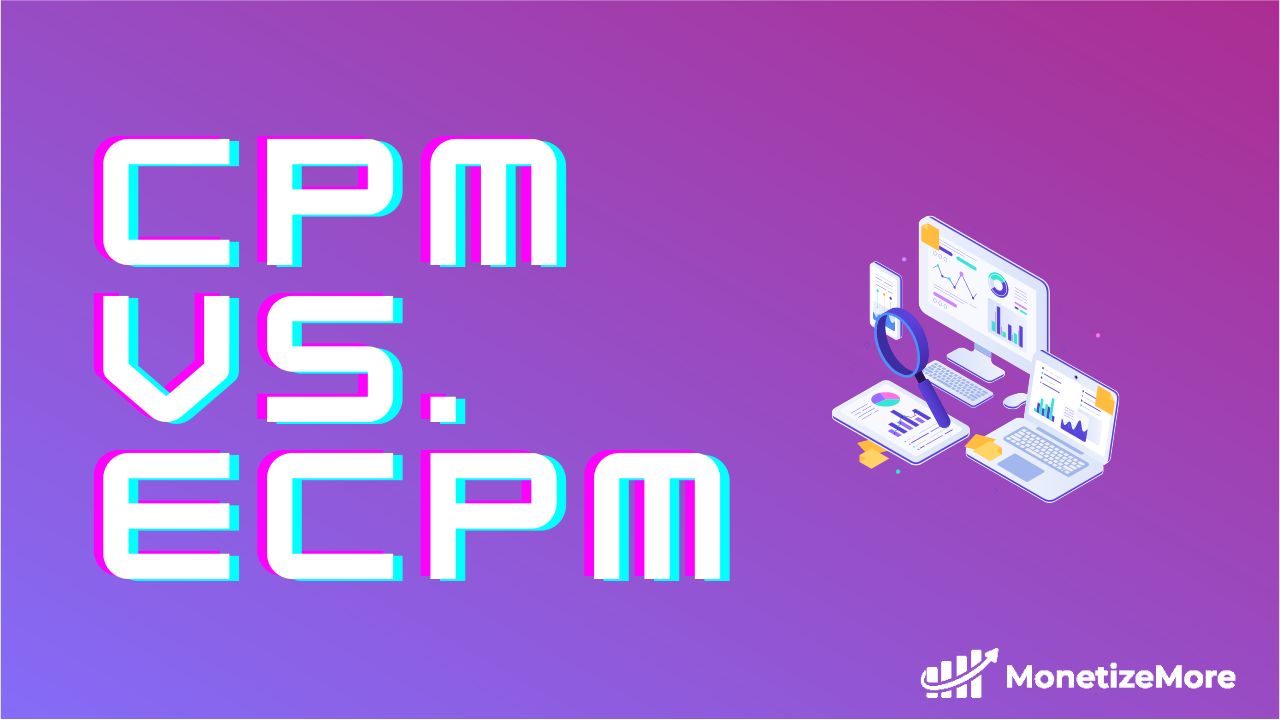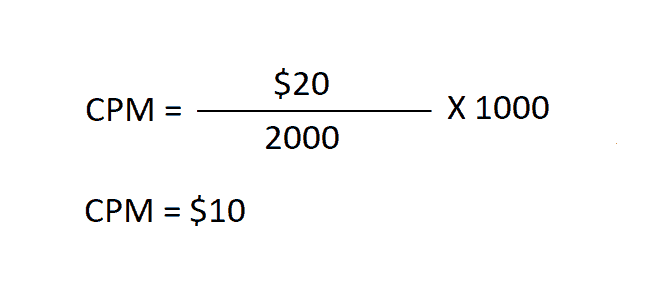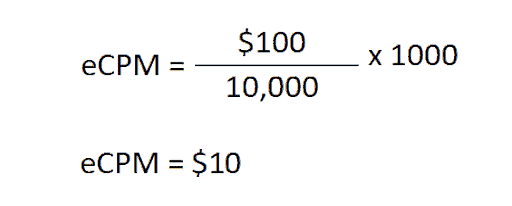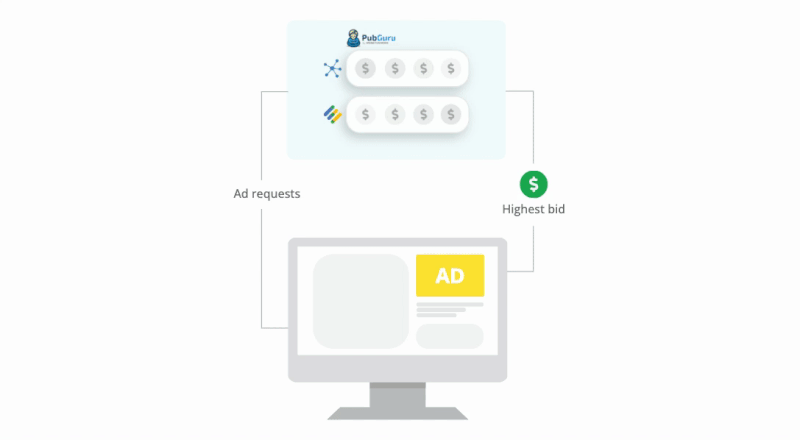
This post was most recently updated on April 15th, 2024
Maximizing ad revenue is a top priority for publishers, but with so many different metrics to track, it can be easy to get confused. Two of the most commonly used metrics in the industry are CPM and eCPM, but while they may sound similar, they have distinct differences that are important to understand. In this post, we’ll explore the differences between CPM and eCPM, how to calculate each, and how they can be used to measure earnings.
By the end of this post, you’ll better understand these important metrics and how to use them to optimize your ad monetization strategy.
CPM stands for “Cost Per Mile” or cost per 1000 impressions. Advertisers set their desired price per 1000 ads served.
For example, the advertiser budget for a campaign is $20, and the ad receives 2000 impressions. To calculate CPM you take ($20/2000) * 1000 = $10 which means that the advertiser is willing to spend $10 for every thousand impressions.
CPM = (Cost of the campaign/ Number of total impressions) * 1000


The CPM rate helps advertisers and companies to spread their products to a larger audience for an effective advertising cost.
It is also a great metric used by advertisers to measure the cost of the campaign, how much the publisher will get paid for every 1,000 impressions, and to evaluate the effectiveness of displaying ads.
CPM is traffic driven, the higher the traffic of the site the better the CPM.
eCPM or “Effective Cost per thousand impressions” is used by publishers to determine the revenue generated from a thousand impressions of an ad campaign and to measure the performance of a publisher’s inventory being sold in various channels.
For example, if an ad campaign generated $100 revenue after receiving 10,000 impressions, the eCPM would be ($100/10,000) * 1000 = $1. This means that the publisher can earn $1 per 1000 impressions.
eCPM = (Effective Cost / Number of total impressions) * 1000

Example 1: A publisher has two ad units on their website with the same CPM, but one has a higher eCPM due to higher click-through rates (CTR). The publisher can use this data to optimize their website layout to improve CTR and increase eCPM.
Example 2: A publisher has two different ad networks with the same CPM but different eCPM due to varying levels of targeting and relevancy. The publisher can use this information to choose the better-performing network to increase revenue.
Example 3: A publisher wants to optimize their ad stack for maximum revenue, so they use both CPM and eCPM to determine which ad units and networks perform best.

In Summary, CPM is the rate that the advertiser is willing to pay for a 1000 impressions and eCPM is the earning of the publisher per 1000 impressions.
We use CPM to increase visibility, advertise for relevant audiences, and drive high-performing campaigns. eCPM is very helpful for publishers to evaluate and optimize their monetization by monitoring ad revenue generated from campaigns.
It is important that publishers and advertisers know the difference so that publishers can accurately measure the revenue performance and the campaign costs for better forecasting. Are you ready to maximize your ad earnings? Sign up for a Starter account at MonetizeMore today!
CPM is the rate that advertisers pay per 1000 impressions. eCPM is the ad revenue of a publisher per 1000 impressions. Find out more about CPM and eCPM in our blog post.
eCPM = (Estimated Earnings / Number of total impressions) * 1000
CPM is the rate advertisers pay per 1000 impressions for ads. RPM is the ad revenue a publisher earns per 1000 impressions on their website. RPM can also be calculated on an ad, session, or page basis.

With over ten years at the forefront of programmatic advertising, Aleesha Jacob is a renowned Ad-Tech expert, blending innovative strategies with cutting-edge technology. Her insights have reshaped programmatic advertising, leading to groundbreaking campaigns and 10X ROI increases for publishers and global brands. She believes in setting new standards in dynamic ad targeting and optimization.
10X your ad revenue with our award-winning solutions.